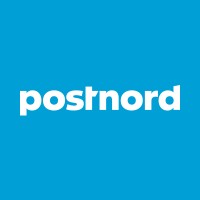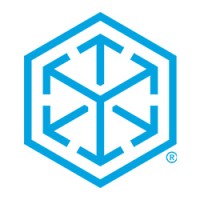
Transnet SOC Ltd Company Cyber Security Posture
transnet.netAs the custodian of ports, rail and pipelines, Transnet’s objective is to ensure a globally competitive freight system that enables sustained growth and diversification of the country’s economy. As a state-owned company, Transnet continues to leave an indelible mark on the lives of all South Africans. With a geographical footprint that covers our entire country, Transnet is inextricably involved in all aspects of life in South Africa. Through the Transnet Foundation - which is the Corporate Social Investment arm of Transnet - we have invested time and money in several diverse programmes around the country that provide much-needed succour to our communities. Looking ahead, Transnet is focused on modernizing infrastructure, driving growth, and enhancing efficiency through strategic partnerships. Our vision is clear: to contribute meaningfully to South Africa’s economic aspirations through sustainable growth and modernization.
TSL Company Details
transnet-soc-ltd
25668 employees
738499.0
none
Transportation, Logistics, Supply Chain and Storage
transnet.net
Scan still pending
TRA_1019602
In-progress
Between 200 and 800
This score is AI-generated and less favored by cyber insurers, who prefer the TPRM score.
 TSL Global Score
TSL Global Score.png)

Transnet SOC Ltd Company Scoring based on AI Models
| Model Name | Date | Description | Current Score Difference | Score |
|---|---|---|---|---|
| AVERAGE-Industry | 03-12-2025 | This score represents the average cybersecurity rating of companies already scanned within the same industry. It provides a benchmark to compare an individual company's security posture against its industry peers. | N/A | Between 200 and 800 |
Transnet SOC Ltd Company Cyber Security News & History
| Entity | Type | Severity | Impact | Seen | Url ID | Details | View |
|---|---|---|---|---|---|---|---|
| Transnet SOC Ltd | Ransomware | 100 | 6 | 07/2021 | TRA191716322 | Link | |
Rankiteo Explanation : Attack threatening the economy of a geographical regionDescription: South Africa’s logistics and port operator Transnet fell victim to a ransomware attack. The attack caused its IT systems, websites, and Navis* container terminal OS to go offline. It disrupted the access of several stakeholders in the freight industry to the container terminals at the Durban port. | |||||||
Transnet SOC Ltd Company Subsidiaries

As the custodian of ports, rail and pipelines, Transnet’s objective is to ensure a globally competitive freight system that enables sustained growth and diversification of the country’s economy. As a state-owned company, Transnet continues to leave an indelible mark on the lives of all South Africans. With a geographical footprint that covers our entire country, Transnet is inextricably involved in all aspects of life in South Africa. Through the Transnet Foundation - which is the Corporate Social Investment arm of Transnet - we have invested time and money in several diverse programmes around the country that provide much-needed succour to our communities. Looking ahead, Transnet is focused on modernizing infrastructure, driving growth, and enhancing efficiency through strategic partnerships. Our vision is clear: to contribute meaningfully to South Africa’s economic aspirations through sustainable growth and modernization.
Access Data Using Our API

Get company history
.png)
TSL Cyber Security News
South Africa Port Operator Declares Force Majeure Over Cyber Attack
Transnet SOC Ltd., South Africa's state-owned ports and freight-rail company, declared force majeure at the country's key container ...
Top ICT tenders: SITA to toughen up its cyber security measures
Top ICT tenders: SITA to toughen up its cyber security measures · State Information Technology Agency · Department of Human Settlements · City ...
‘Death Kitty’ Ransomware Linked to South African Port Attack
South Africa's port and rail company appears to have been targeted with a strain of ransomware that cybersecurity experts have linked to a ...
Crippled Africa Port Goes Manual as PE-Backed Software Is Shut
Transnet on Thursday said container terminals stopped operations because of a malfunction in its computer network, though its rail, pipeline and ...
SA’s government departments are sitting ducks for cyber attacks
South Africa's government departments and entities are sitting ducks for cyber attacks due to years of underinvestment in security systems.
Cyber Security Summit Unveils the 2025 Cyber50: Honoring Visionary Leaders Shaping the Future of Cybersecurity
The Cyber Security Summit proudly presents the 2025 Cyber50, celebrating 50 exceptional cybersecurity leaders who are shaping the future of ...

TSL Similar Companies

ComfortDelGro
ComfortDelGro is a leading multi-modal transport operator offering a comprehensive suite of transportation solutions. Our extensive network spans public transport including buses and rail, point-to-point transport with taxis and private hire cars as well as business-to-business mobility solutions. E

PostNord Sverige
We deliver. PostNord is the leading supplier of communications and logistics solutions to, from and within the Nordic region. We also ensure the postal service to households and businesses in Sweden and Denmark. With our expertise and a strong distribution network, we develop options for tomorro

Aramex
Founded in 1982, Aramex has emerged as a global leader in logistics and transportation, renowned for its innovative services tailored to businesses and consumers. As a listed company on the Dubai Financial Market (since 2005) and headquartered in the UAE, our strategic location facilitates extensive

Blue Bird Group
From taxi, containers and heavy equipments, to logistics, Blue Bird Group is a holding group that is ready to cater to all your needs. To many citizens of Jakarta and many other big cities in Indonesia, Blue Bird Group isn’t just a taxi company, but a part of their lifestyle. By serving millio

C.H. Robinson
C.H. Robinson delivers logistics like no one else™. Companies around the world look to us to reimagine supply chains, advance freight technology, and solve logistics challenges—from the simple to the most complex. Over 90,000 customers and 450,000 contract carriers in our network trust us to manage

Sandd
Sandd is a Dutch postal company that focuses on the delivery of addressed bulk mail, such as direct mail and subscription magazines. Since the liberalization of the Dutch postal market in 2009 Sandd also focuses on transaction mail such as invoices and policies. Sandd wants her clients connect w

Frequently Asked Questions
Explore insights on cybersecurity incidents, risk posture, and Rankiteo's assessments.
TSL CyberSecurity History Information
How many cyber incidents has TSL faced?
Total Incidents: According to Rankiteo, TSL has faced 1 incident in the past.
What types of cybersecurity incidents have occurred at TSL?
Incident Types: The types of cybersecurity incidents that have occurred incident Ransomware.
Incident Details
Can you provide details on each incident?

Incident : Ransomware
Title: Ransomware Attack on Transnet
Description: South Africa’s logistics and port operator Transnet fell victim to a ransomware attack. The attack caused its IT systems, websites, and Navis container terminal OS to go offline. It disrupted the access of several stakeholders in the freight industry to the container terminals at the Durban port.
Type: Ransomware
What are the most common types of attacks the company has faced?
Common Attack Types: The most common types of attacks the company has faced is Ransomware.
Impact of the Incidents
What was the impact of each incident?

Incident : Ransomware TRA191716322
Systems Affected: IT systems, websites, Navis container terminal OS
Downtime: ['IT systems', 'websites', 'Navis container terminal OS']
Operational Impact: Disrupted access to container terminals at Durban port
Which entities were affected by each incident?

Incident : Ransomware TRA191716322
Entity Type: Logistics and port operator
Industry: Logistics
Location: South Africa
Additional Questions
Impact of the Incidents
What was the most significant system affected in an incident?
Most Significant System Affected: The most significant system affected in an incident were IT systems, websites, Navis container terminal OS.
What Do We Measure?
















Every week, Rankiteo analyzes billions of signals to give organizations a sharper, faster view of emerging risks. With deeper, more actionable intelligence at their fingertips, security teams can outpace threat actors, respond instantly to Zero-Day attacks, and dramatically shrink their risk exposure window.
These are some of the factors we use to calculate the overall score:
Identify exposed access points, detect misconfigured SSL certificates, and uncover vulnerabilities across the network infrastructure.
Gain visibility into the software components used within an organization to detect vulnerabilities, manage risk, and ensure supply chain security.
Monitor and manage all IT assets and their configurations to ensure accurate, real-time visibility across the company's technology environment.
Leverage real-time insights on active threats, malware campaigns, and emerging vulnerabilities to proactively defend against evolving cyberattacks.




